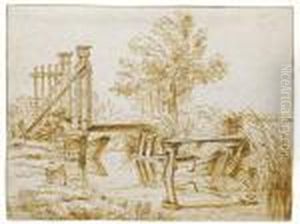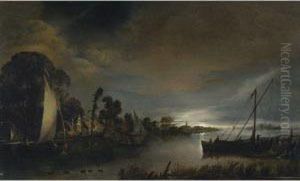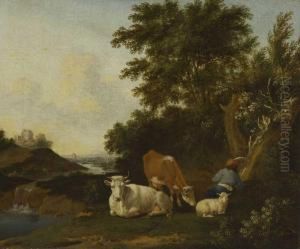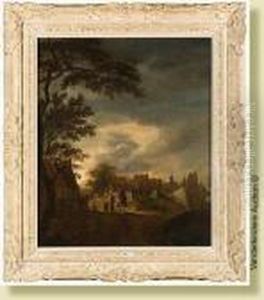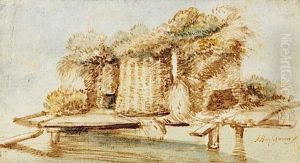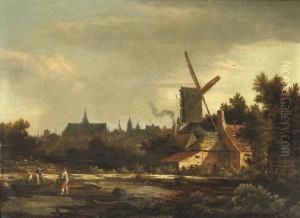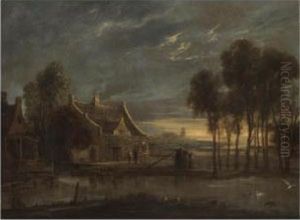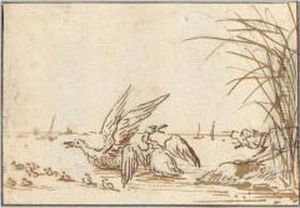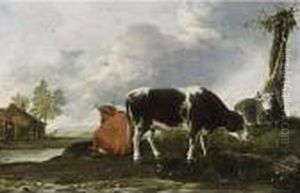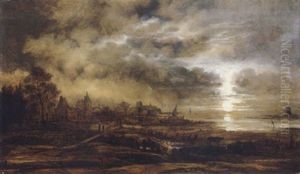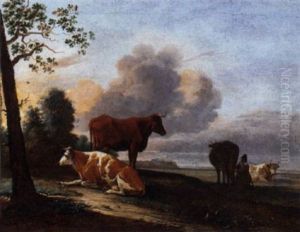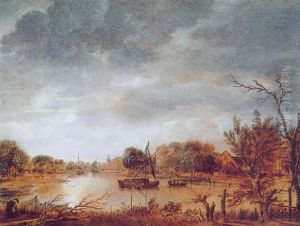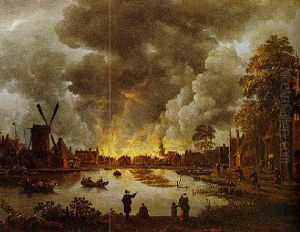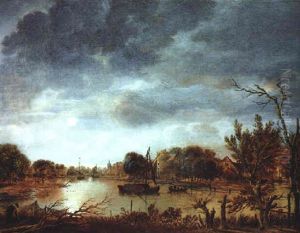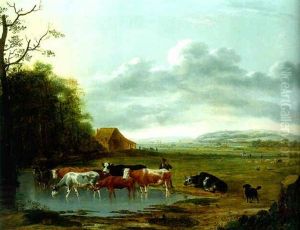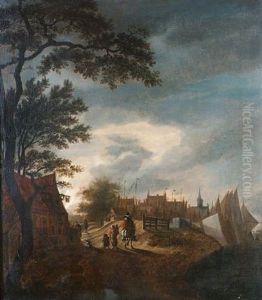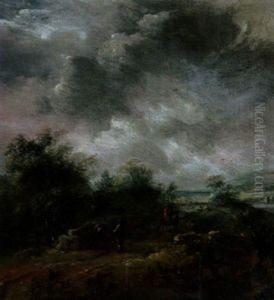Anthonie Van Borssom Paintings
Anthonie van Borssom, a Dutch Golden Age landscape painter, was born in 1631 in Amsterdam, Netherlands. His work is characterized by detailed depictions of natural environments, often with an emphasis on trees, skies, and water. Van Borssom was a student of Rembrandt van Rijn, one of the most prominent Dutch artists of the time. Despite the prominence of his teacher, van Borssom did not achieve the same level of fame during his lifetime.
Van Borssom's surviving oeuvre consists primarily of landscapes, with a few drawings of animals. He had a particular talent for capturing the serene beauty of the Dutch countryside, with its expansive skies and tranquil waters. His works are noted for their delicate use of light and shade, which he may have inherited from Rembrandt's teachings. However, van Borssom developed his own distinctive style, evident in his soft rendering of foliage and his careful attention to atmospheric conditions in his landscapes.
Although van Borssom did not leave a large body of work behind, his paintings and drawings are represented in several important collections, including the Rijksmuseum in Amsterdam and the Metropolitan Museum of Art in New York. He passed away in 1677, in Amsterdam. His art continues to be appreciated for its quiet beauty and contribution to the Dutch landscape tradition. Van Borssom remains a respected figure for scholars and collectors interested in the Dutch Golden Age and its rich legacy of landscape painting.


